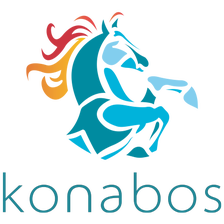Producing Effective Content - Strategically
Ken Gray - Senior Digital Experience Strategist
22 Apr 2020

While dealing with clients of all shapes and sizes, it seems there is one thing they all have in common: the struggle to get their content ideas “out the door”.
Some organisations are not sure how much content to produce, while others don’t know what kind of content to produce. Then there are those who know both the what and how much, but are overwhelmed by the sheer volume of content needed; often lacking the resources to produce it all.
What I encourage, is for you to take a step back, in order to take a leap forward in producing high-quality, relevant content at scale. When you step back, identify the areas that create the most trouble in your ability to create effective content at scale. Here are some common pitfalls to get you started:
Common Content Pitfalls
The first step to resolving any crisis is identifying its root-cause or causes. Here are some of the more common causes of the “content crisis” that I’ve heard and seen from clients:
- Lack of an overarching Content Strategy
- Focusing on the wrong content / Prioritizing volume over value
- Workflow bottlenecks or a lack of a clear process / Poor planning and unrealistic deadlines
- Siloed media and assets & content
- Outdated understanding of SEO (It’s customer-centric now)
Leaping Forward
Of the pitfalls listed above, I believe the first one, “Lack of an overarching Content Strategy”, deserves the most attention, as it informs the “why” in creating effective content.
If you don’t know why you’re creating content, then you’ll easily fall into the trap of creating volumes of content, over creating content that matters to your end-users and miss content that helps you reach your business objectives and your marketing goals.
Seven Steps to Effective Content
1. Review your business goals and priorities
Effective content is content that aligns with and helps achieve a company’s business objectives and digital goals.
Your annual strategic plan and quarterly objectives are the sources for information on what your organization is trying to achieve. Refer to it often to ensure you remain focused.
Example: Konabos has as part of its objectives; 1) to help the Sitecore community, 2) be known for its thought leadership and expertise.
2. Select your priority content types or focus areas
Focus areas can be specific products, services, or business units that need content.
Prioritize the business objectives gleaned from Step 1; first by highest impact and then by easiest to achieve.
The reason we prioritize is because it’s impossible to “boil the ocean”, so we need to be very focused on what content we will produce and why. Think of it as your North Star.
Example: To help the community and display thought leadership, team members are encouraged to regularly write useful blog posts to shed light on and solve common development and marketing challenges.
3. Identify Relevant Customer Segments
With your content types and focus areas in mind, select the top one or two personas for which you will write your content.
Again, we are keeping things very focused as we don’t want to create content that is too general – it will become less relevant and diluted.
Example: I’ve selected our Content Marketer/Author segment to provide a “strategy” piece to help my audience with a common content challenge.
4. Create a Matrix for Priority Content Topics
Open your journey map for this step and begin brainstorming topics for the persona(s) identified in Step 3.
Here you will also want to identify the digital goals (your expected outcomes) for the content you create. Example: Here are three topics that came out of the exercise: 1) Producing Effective Content 2) Personalization: Eating PIE and NOT the Elephant 3) Gaining Organizational Alignment for Agile Marketing
5. Prioritize Each Matrix-Vector
Identify gaps in your content, by using your internal search analytics to identify visitors’ needs, and a path analyzer tool to see where visitors are dropping off.
Your highest priority will be to FILL THE GAPS, by referencing your Matrix and selecting the topic that best fits the gap.
If you need to create a topic, that’s okay too. The matrix should be a living and breathing document.
Example: Based on the content topics listed in Step 4, I prioritized “Producing Effective Content” as a jumping-off point to help the most people in the identified audience. The other topics are narrower in their focus and slightly more advanced.
6. Research, Write, and Peer Review
It’s time now to write your piece. Start by doing some internet “re-search” to what’s already been written and what’s not yet been said.
Once you’ve written something, have a peer review it and provide feedback to make it better. I found this to be both helpful and humbling.
Example: I started with an outline and then used a popular search engine to see what had been written. After writing, I had my peers at Konabos have a read through. In fact, these examples were a suggestion from my colleagues to make the article more useful.
7. Publish, Promote, and Measure
Before publishing your piece, be sure you have benchmarks and digital goals set up to measure the impact of your new content.
Determine how you will make your new content know and track engagement from the various channels.
Example: You can use Sitecore’s Campaign Activities (sc_camp) tag, to track your social and email links, and Sitecore Goals to measure engagement and conversions from your new content.
Rinse and Repeat
Now that you have a process in place, scale it across products, services, personas, customer journey milestones, etc.
If you have any questions, need clarity or if I can be of any assistance to you, please feel free to reach out.
Twitter @ken_sitecorean LinkedIn kengray15

Ken Gray
Ken is a two-time Sitecore Strategy MVP who has been working with the Sitecore platform since 2011. He has over 20 years of experience in business analysis, software development, content management systems, marketing, and digital strategy.
Ken’s passion for digital marketing and personalization along with his coaching and training abilities, aids Konabos in helping dozens of Content Authors and Sitecore Marketers improve their productivity and knowledge of Sitecore; thus maximizing each client’s return on investment.
In short, Ken makes the complex toolset of Sitecore, simple.


Share on social media